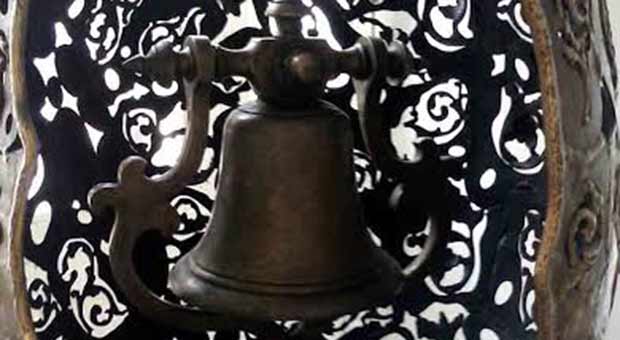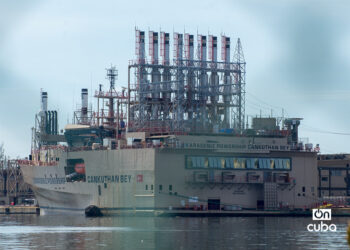Can bronze be kneaded as life is? Can it be shaped between the hands like senses, desires… like a lifetime dream?
The answer is yes, but you have to become a master to make it.
Today, I met two of them, who share the same name and passion for the beauty and malleability of metals. Their name is Israel, Israel De Leon and Israel Rufin. Part of their pieces make up a recently opened exhibit with the tittle Broncean dos, at the Cuban Association of Craftsmen Artists (ACAA by its acronym in Spanish) in Matanzas province.
The exhibit displays 14 pieces, including “Como pez en el bronce”, “Inexorable”, and a very Cuban farmer with a guitar like if singing about the good and the bad things of life, which are some of the adjectives that describe bronze. In general, there is an amazing combination of lights and shadows, in details, in the well-planned use of patinas that give blue, red, black shades to bronze with such mastery that make amateur spectators wonder: is this mud? How old is this piece? Is it really not that old?
The thing is these men are virtuous.
For De Leon, recycling is the first step. He travels from town to town, home to home, looking for deteriorated antiques: lamps, vases, photograph and painting frames, headboards, furniture decorations… That’s the basics. Friends and family help him. The creative process is about to start on a daily basis he visits the workshop where he stores the pieces collected, just to look in detail every fragment, to identify with them. Once he has memorized them, then he starts dreaming about them. He starts creating possible combinations, contrasts, till he gets a concept. The egg shell has been broken from the inside and there is not a little chicken but a carnivorous plant. Life and death are exposed… but… what came first?
Time, inexorable as it is, is represented with a bell. Bells are rough, solid, as time. It is not protected by not by a Math cube, but by a vase with pronounced curves. Seconds, hours, days and years flow with grace, involving us in its movement, and most of the times we are not even unaware of that.
Israel Rufínuses a different technique, one already known in Greece in the sixth century BC: smelting the lost wax. First, he shapes his pieces in beeswax, he spends weeks at it. He has to be careful because this is the foundation for the final result.
Once he is done with that, he covers the horse, the dancer or the farmer (three of the pieces he is exhibiting), in soft plaster or clay. Later on, he puts them in a kiln. The beeswax melts and comes out through some holes specifically designed for that purpose. Then, he injects the molten metal, which takes the shape of the model. The result is an excellent superficial finish. Now, it is time for patinas. For that he uses chemical solutions that react with bronze and add it shades and varied effects, depending on the solutions used and the number of layers applied.
In De Leon’s work, creativity and imagination play a key role in his production process, while in Rufin’s the essential element is daily routine, which doesn’t imply he is a realistic creator. In spite of bronze, or thanks to it, his live creatures show an incredible inner strength, movement and desire for action. “Nature subjugated from the iron soul”, says Maylan Alvarez in the catalogue of the exhibit.
Isarel De León and Isarel Rufínare two virtuous artists who are able to shape bronze as it dancing. Some of their pieces are part of private collections in Mexico, the United States, Spain and Chile, as well as in Sol Melia hotels in Varadero. For the next 15 days, their pieces can be appreciated at the Cuban Association of Craftsmen Artists of Matanzas.








